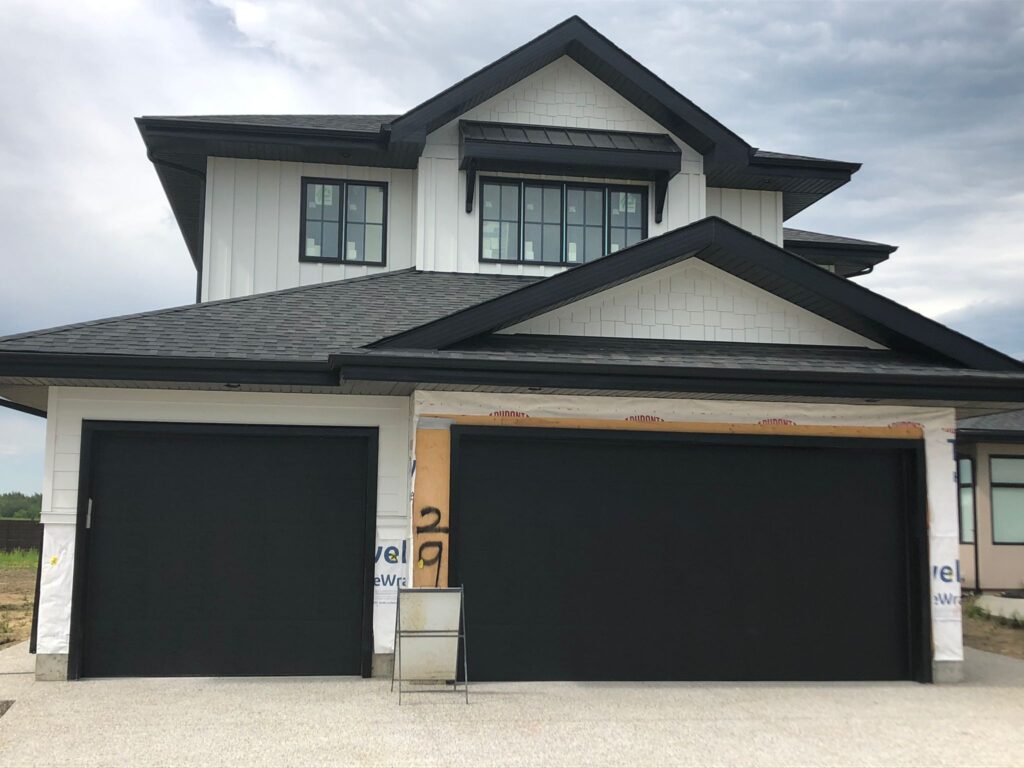Have you ever experienced a situation where your garage door won’t close all the way? You press the button on your remote or wall switch, but the door only moves a few inches before it stops and reverses. This can be frustrating and inconvenient, especially if you need to secure your garage or leave for work.
There are many possible reasons why your garage door might not close properly. Some of them are easy to fix by yourself, while others require the assistance of a garage door technician. In this article, we will help you identify the common causes of garage door closure issues and how to troubleshoot them. We will also tell you when to seek professional help from a reliable garage door repair service in Edmonton.
By following our tips, you can save time and money on garage door repair and enjoy a smooth and safe operation of your garage door. Let’s get started!
Common Reasons Behind Garage Door Closure Issues
One of the most common reasons why your garage door won’t close is a problem with the garage door sensors. These are the small devices that are installed on both sides of the garage door, near the floor. They emit an invisible beam of light that detects if there is anything blocking the path of the door. If the sensors are misaligned, dirty, or damaged, they can prevent the door from closing.
To check if the sensors are working properly, you can try these steps:
- Make sure there is nothing obstructing the sensors or the area between them. Remove any debris, dust, or cobwebs that might interfere with the sensor beam.
- Check if the sensors are aligned. They should be pointing directly at each other, and the LED lights on both sensors should be lit. If one or both of the lights are blinking or off, you need to adjust the sensors until they are aligned.
- Check the wiring of the sensors. Make sure the wires are not loose, frayed, or cut. If you see any signs of damage, you need to replace the wires or call a garage door technician.
Another common reason why your garage door won’t close is a problem with the garage door tracks. These are the metal rails that guide the door as it moves up and down. If the tracks are bent, warped, or misaligned, they can cause the door to jam or stop.
To check if the tracks are in good condition, you can try these steps:
- Inspect the tracks for any visible damage. Look for any dents, cracks, or gaps that might affect the smooth movement of the door. If you see any major damage, you need to replace the tracks or call a garage door repair service.
- Clean the tracks with a soft cloth and a mild detergent. Remove any dirt, grease, or rust that might build up on the tracks. Do not use any abrasive or corrosive materials that might damage the tracks.
- Lubricate the tracks with a silicone-based spray. This will reduce the friction and noise of the door and extend the lifespan of the tracks. Do not use any oil or grease that might attract dust and dirt.
These are some of the common reasons why your garage door won’t close. However, there are other possible causes that might require more advanced troubleshooting. In the next section, we will show you how to adjust the sensors and tracks for optimal performance.
Adjusting Sensors and Tracks for Optimal Performance
Sometimes, your garage door won’t close because the sensors or tracks need some minor adjustments. This can happen due to normal wear and tear, temperature changes, or accidental bumps. In this section, we will show you how to adjust the sensors and tracks for optimal performance.
To adjust the sensors, you will need a screwdriver and a level. Follow these steps:
- Locate the sensor brackets that hold the sensors in place. They are usually attached to the garage door frame or the wall.
- Loosen the screws on the brackets slightly, so that you can move the sensors up and down or side to side.
- Use the level to make sure the sensors are parallel to the floor and to each other. The LED lights on both sensors should be steady and not blinking.
- Tighten the screws on the brackets once the sensors are aligned. Test the door by pressing the remote or wall switch. The door should close without any problems.
To adjust the tracks, you will need a hammer, a rubber mallet, and a carpenter’s square. Follow these steps:
- Check the alignment of the tracks with the carpenter’s square. The tracks should be perpendicular to the floor and parallel to each other.
- If the tracks are out of alignment, use the hammer or the rubber mallet to gently tap them into the correct position. Do not hit the tracks too hard, as this might damage them.
- Check the alignment again with the carpenter’s square. Repeat the process until the tracks are aligned.
- Test the door by pressing the remote or wall switch. The door should close smoothly and quietly.
By adjusting the sensors and tracks, you can improve the performance of your garage door and prevent closure issues. However, there are some situations that require more than just simple adjustments. In the next section, we will tell you when to seek professional help for garage door troubles.

When to Seek Professional Help for Garage Door Troubles
While some garage door troubles can be fixed by yourself, there are others that are best left to the professionals. Attempting to repair them on your own can be dangerous, costly, or ineffective. In this section, we will tell you when to seek professional help for garage door repair and how to choose a reliable garage door repair service in Edmonton.
One of the situations that require professional help is when your garage door springs need adjustment or replacement. The springs are the components that balance the weight of the door and allow it to open and close smoothly. They are under a lot of tension and can break or snap if they are worn out or damaged. If this happens, the door can fall suddenly or become unbalanced, posing a risk of injury or property damage.
To avoid this, you should have your garage door springs inspected and adjusted by a garage door technician at least once a year. If you notice any signs of spring failure, such as a loud bang, a gap in the spring, or a sagging or uneven door, you should call a garage door repair service immediately. Do not try to adjust or replace the springs by yourself, as this can be very dangerous and void your warranty.
Another situation that requires professional help is when your garage door opener needs repair or replacement. The opener is the device that controls the movement and operation of the door. It can malfunction due to various reasons, such as electrical issues, faulty wiring, worn-out gears, or broken parts. If your garage door opener is not working properly, you might experience problems such as:
- The door does not respond to the remote or wall switch
- The door opens or closes by itself
- The door reverses before hitting the floor
- The door makes unusual noises or vibrations
- The door does not open or close completely
To fix these problems, you should contact a garage door repair service that specializes in garage door opener repair. They can diagnose the problem and offer you the best solution, whether it is repairing or replacing the opener. Do not try to repair or replace the opener by yourself, as this can be complicated and risky.
These are some of the situations that require professional help for garage door repair. However, many other possible scenarios might need expert assistance, such as:
- Repairing or replacing damaged or broken panels, cables, rollers, hinges, or seals
- Installing a new garage door or upgrading an existing one
- Enhancing the security and safety features of the garage door
- Performing regular maintenance and tune-ups of the garage door system
In any case, you should always choose a reputable and trustworthy garage door repair service in Edmonton that can provide you with quality workmanship, fair pricing, and excellent customer service.
Conclusion
In this article, we have discussed how to troubleshoot a garage door that won’t close completely. We have explained the common reasons behind garage door closure issues, such as problems with the sensors or tracks. We have also shown you how to adjust the sensors and tracks for optimal performance. Finally, we have told you when to seek professional help for garage door repair and how to choose a reliable garage door repair service in Edmonton.
If you need a trustworthy and experienced garage door technician in Edmonton, you can count on us at Iceberg Overhead Doors. We offer a wide range of garage door solutions for residential and commercial customers, including emergency garage door repair, garage door installation and replacement, garage door opener repair and replacement, garage door spring adjustment and replacement, and garage door maintenance and inspection. We have a 100% satisfaction guarantee and competitive pricing. Contact us today and get a free estimate for your garage door repair needs!
Frequently Asked Questions
Why won’t my garage door close completely?
A common reason is an issue with the garage door sensors. Misalignment, dirt, or damage to these sensors can prevent the door from closing.
How can I check if my garage door sensors are working correctly?
Ensure nothing is blocking the sensors or their path. Check the alignment and lights on the sensors, and inspect the wiring for damage.
What if the problem is with the garage door tracks?
Look for any visible damage to the tracks and clean them to remove dirt or grease. Lubricate the tracks with a silicone-based spray for smoother operation.
Can I adjust the sensors and tracks myself?
Minor adjustments can be made using basic tools like a screwdriver, hammer, or rubber mallet. However, ensure to follow safety guidelines and instructions.
What are the signs of garage door opener malfunction?
Issues like the door not responding, opening or closing by itself, making unusual noises, or not closing completely indicate opener problems.
How do I choose a reliable garage door repair service in Edmonton?
Look for a service with a reputation for quality workmanship, fair pricing, and excellent customer service.









